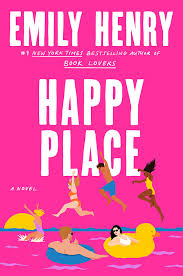Chapter 18: Wyn and Love’s Fragile Balance
byChapter “Real Life” delves deeply into the fragile intricacies of love, loss, and rediscovery, capturing the bittersweet nuances of the protagonist’s connection with Wyn. Set against the muted glow of a movie theater bathroom, the chapter begins with a whimsical interaction over Wyn’s overly ambitious candy purchase. His playful justification for the extravagant assortment is both endearing and telling, revealing his subtle attempts to bridge emotional gaps through humor and care. This light-hearted exchange acts as a prelude to the deeper revelations and unresolved emotions that will soon surface.
As the conversation shifts, the mood takes on a reflective tone, and Wyn opens up about the changes in his life since their separation. He confesses his struggles with alcohol, his newfound preference for edibles, and the bittersweet moments he shared with his mother as they navigated her health challenges. This moment of vulnerability allows the protagonist to glimpse the layers of Wyn’s grief and the coping mechanisms he has developed in response to loss and change. It also underscores a critical turning point in their dynamic, where walls begin to lower, and honesty takes precedence over the defenses they’ve both carried.
The conversation moves toward their shared past, exposing the unresolved pain and lingering misunderstandings that define their breakup. Wyn candidly explains that their separation wasn’t the result of a single event but a culmination of personal struggles, including the profound grief of losing his father and the emotional toll of balancing familial obligations. His admission reveals his fear of burdening the protagonist with his own turmoil, a decision he now regrets. The protagonist, in turn, reflects on the complexity of their relationship, recognizing that love, while powerful, is often tested by life’s harshest realities.
Amidst the weight of these confessions, moments of levity and nostalgia emerge, offering a reprieve from the intensity of their emotions. They reminisce about shared experiences, laugh at inside jokes, and for a brief moment, rediscover the ease that once defined their bond. These lighter exchanges highlight the enduring thread of friendship that continues to connect them, even as the romantic aspects of their relationship remain shrouded in uncertainty. The juxtaposition of humor and vulnerability adds depth to their interaction, painting a vivid picture of two people who are both deeply connected and profoundly unsure of their path forward.
The setting of the movie theater acts as an evocative backdrop, amplifying the intimacy of their exchange. The neon lights, the soft hum of distant conversations, and the everyday mundanity of their surroundings contrast sharply with the emotional depth of their dialogue. This contrast reinforces the idea that profound moments of connection can unfold in the most ordinary spaces, making their vulnerability feel even more raw and genuine. The theater, a place designed for storytelling, becomes a stage for their own narrative—a tale of love, regret, and the possibility of renewal.
By the end of the chapter, the unresolved tension between the protagonist and Wyn remains palpable, leaving the future of their relationship uncertain. Their conversation, filled with admissions, apologies, and fleeting glimmers of hope, serves as both a catharsis and a question mark. While they part ways without a definitive resolution, the openness they’ve shared hints at the possibility of reconciliation, or at least a mutual understanding that transcends the pain of their past.
This chapter encapsulates the complexity of human relationships, blending humor, sorrow, and introspection to create a deeply relatable narrative. It captures the universal struggle to navigate love in the face of change and adversity, reminding readers that connections, no matter how strained, can often withstand the weight of time and distance. Through its rich emotional layers and authentic dialogue, “Real Life” beautifully portrays the delicate dance between holding on and letting go, leaving readers with a poignant sense of hope and the recognition that even amidst uncertainty, love has the power to endure.


